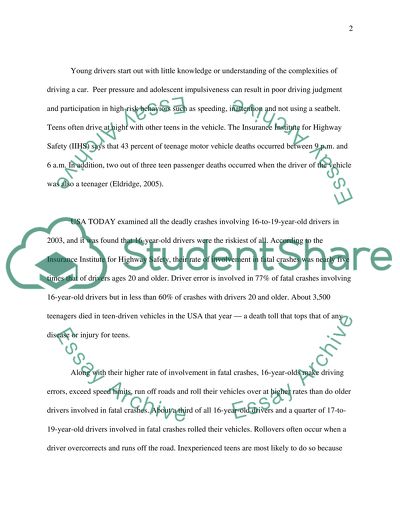Cite this document
(“Should teens be allowed to drive at 16 Essay Example | Topics and Well Written Essays - 1000 words”, n.d.)
Retrieved from https://studentshare.org/people/1535283-should-teens-be-allowed-to-drive-at-16
Retrieved from https://studentshare.org/people/1535283-should-teens-be-allowed-to-drive-at-16
(Should Teens Be Allowed to Drive at 16 Essay Example | Topics and Well Written Essays - 1000 Words)
https://studentshare.org/people/1535283-should-teens-be-allowed-to-drive-at-16.
https://studentshare.org/people/1535283-should-teens-be-allowed-to-drive-at-16.
“Should Teens Be Allowed to Drive at 16 Essay Example | Topics and Well Written Essays - 1000 Words”, n.d. https://studentshare.org/people/1535283-should-teens-be-allowed-to-drive-at-16.


